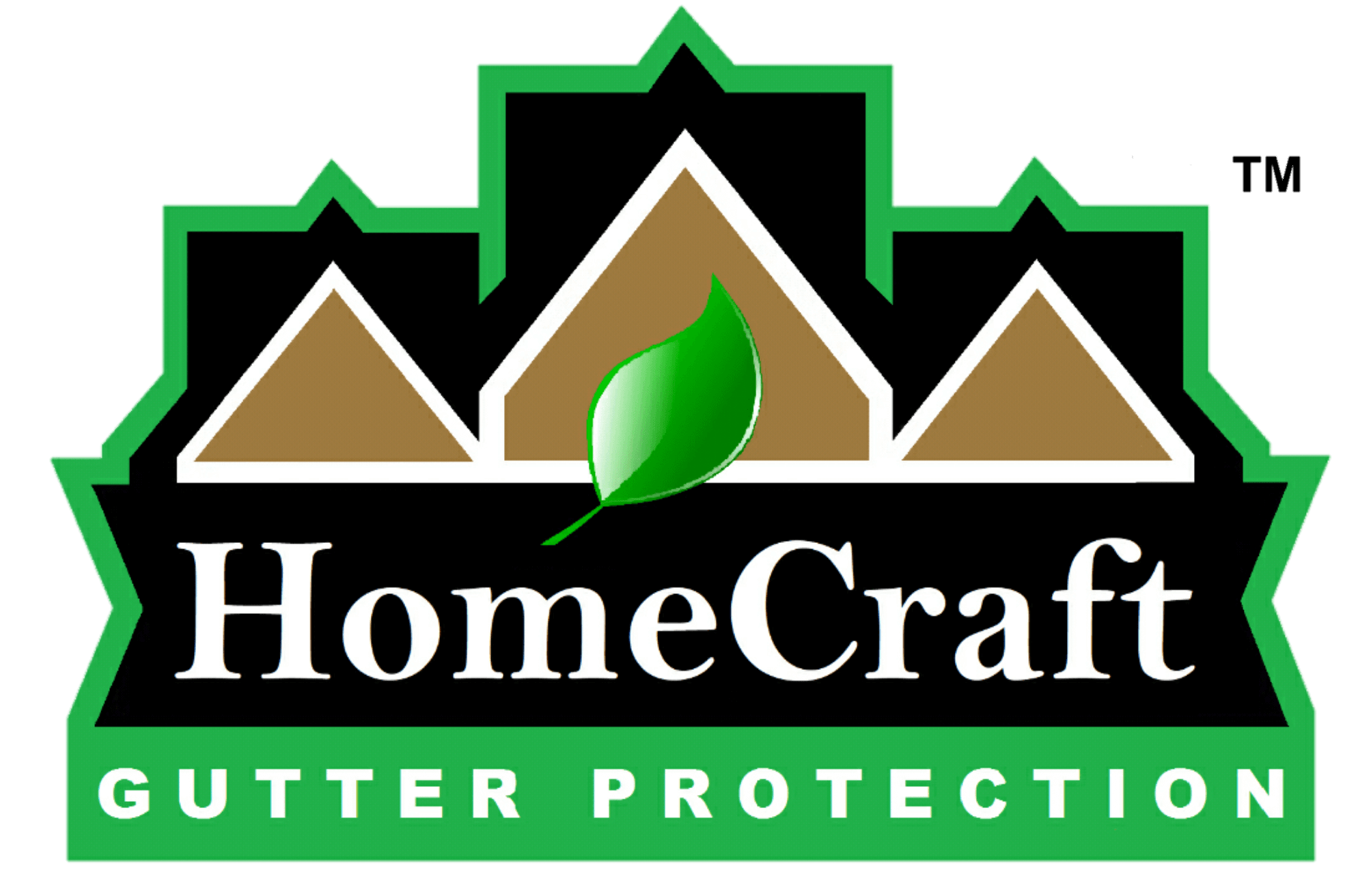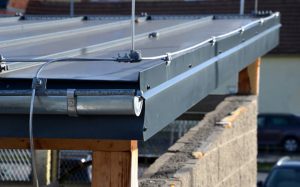Drip edges and gutters are crucial in protecting your home from water damage. A drip edge is a strip of metal or plastic installed along the roof’s edge to direct water away from the fascia and into the gutters. Gutters, in turn, channel water away from the house’s foundation.
This article will provide a comprehensive guide on everything you need to know about drip edges and gutters, from the importance of proper installation and maintenance to the different materials available and how to troubleshoot common problems. By the end of this article, you will better understand how to protect your home and ensure that your drip edge and gutter system is functioning properly.
What Is a Drip Edge, And Why is It Important?
A drip edge is a strip of metal or plastic installed along the roof’s edge to direct water away from the fascia and into the gutters. The drip edge is typically installed before the roofing material is applied, providing a finished edge for the roof. It is also called an eave strip, roof edge or roof apron.
Drip edges are important because they help to prevent water from seeping behind the fascia and causing damage to the structure of the house. Water not directed into the gutters can cause rot, mold and other damage to the wood and framing of the house. Drip edges also help to prevent water from pooling on the roof and causing leaks or damage to the roofing materials. Additionally, a drip edge can add an aesthetic appeal to the roof.
How to Properly Install a Drip Edge on Your Roof
Installing a drip edge on your roof is a straightforward process. Still, it is important to do it correctly to ensure it effectively directs water into the gutters. Here are the basic steps for installing a drip edge:
- Measure the length of the eaves on your roof and purchase enough drip edges to cover the entire length.
- Begin by installing the drip edge along the roof’s eaves, starting at one end and working your way to the other.
- Ensure that the drip edge is flush against the roof deck and that the edge of the drip edge is lined up with the edge of the roof deck.
- Use roofing nails or other fasteners to secure the drip edge to the roof deck.
- Repeat the process for all the eaves on your roof.
- Make sure to overlap the drip edge at the corners of the roof and any other areas where two pieces of drip edge meet.
- Once the drip edge is installed, you can install the roofing materials. It is important to ensure that the roofing materials overlap the drip edge to keep water from seeping behind the fascia.
It’s important to note that different types of roofing material require different drip edges or installation methods. It’s always best to consult a professional roofer or the manufacturer’s recommendations.
Different Types of Drip Edges and Their Uses
Several drip edges are available, each with specific uses and applications. The most common types include:
- Metal drip edge: This is the most popular type of drip edge and is made of aluminum, galvanized steel, or copper. Metal drip edges are durable, long-lasting and resistant to rust and corrosion. They are available in various colors and can be painted to match the color of your roof.
- Vinyl drip edge: This type of drip edge is made of plastic and is a cost-effective option. It is lightweight, easy to install, and comes in various colors. However, vinyl drip edges are less durable than metal ones and can become brittle and crack over time.
- Rubber drip edge: Rubber drip edges are made of a flexible rubber material that can conform to the shape of the roof. They are ideal for use on irregularly shaped roofs and are also resistant to warping and cracking.
- Wooden drip edge: Wooden drip edges are less common than the other types, but they are suitable for use on wooden roofs. They are typically made of cedar and are resistant to rot and decay.
It is important to choose the right type of drip edge for your roof and climate and follow the manufacturer’s instructions for installation and maintenance.
How To Maintain and Repair Your Drip Edge
Proper maintenance and timely repairs can extend the life of your drip edge and keep it functioning effectively. Here are some tips for maintaining and repairing your drip edge:
- Regularly inspect your drip edge for signs of damage, such as rust, corrosion, or cracks.
- Clean your drip edge regularly to remove debris and prevent clogging of the gutters.
- If you notice any damage or wear, make repairs as soon as possible to prevent further damage.
- If your drip edge is made of metal, apply a coat of paint or sealant to protect it from rust and corrosion.
- If your drip edge is made of plastic or rubber, check for cracks or other signs of damage and replace it if necessary.
- If you have a wooden drip edge, ensure it is treated with a protective coating to prevent rotting and decay.
By following these tips, you can help to ensure that your drip edge is functioning properly and protecting your home from water damage.
In summary, Drip edges come in different types, each with specific uses and applications. It’s important to choose the right type of drip edge for your roof and climate and follow the manufacturer’s instructions for installation and maintenance. Regular inspection and repairs are essential to ensure the longevity and proper functioning of the drip edge, and they will help to protect your home from water damage.
How To Properly Install and Maintain Your Gutters
Proper installation and maintenance of your gutter system are essential to ensure that it functions properly and protects your home from water damage. Here are the basic steps for installing gutters:
- Measure the length of the eaves on your roof and purchase enough gutter material to cover the entire length.
- Begin by installing the gutter hangers along the roof’s eaves, starting at one end and working your way to the other.
- Ensure that the gutter hangers are securely fastened to the eaves and spaced properly to support the weight of the gutters and the water flowing through them.
- Install the gutters by attaching them to the gutter hangers. Ensure the gutters are level and the water is flowing properly into the downspouts.
- Install the downspouts and ensure that they are securely fastened to the house and that the water is flowing properly away from the house’s foundation.
Proper maintenance of your gutters includes:
- Regularly inspect your gutters for signs of damage, such as leaks, sagging, or clogging.
- Clean your gutters regularly to remove debris and prevent clogging.
- If you notice any damage or wear, make repairs as soon as possible to prevent further damage.
- Consider installing gutter guards or screens to prevent debris from entering the gutters.
Typical gutter and drip edge problems and how to fix them
Gutters and drip edges are exposed to the elements and, over time, can develop problems that can cause water damage to your home. Some standard gutter and drip edge problems include:
- Clogged gutters: Debris, such as leaves, twigs, and other materials, can clog gutters, causing water to overflow and potentially damage the fascia and foundation of the house. To fix this problem, clean your gutters regularly and consider installing gutter guards or screens to prevent debris from entering the channels.
- Leaks: Gutter leaks can occur due to holes, cracks or separations in the gutter system, causing water damage. To fix this problem, locate the source of the leak and make repairs using sealant or patching material.
- Sagging gutters: Sagging gutters can occur due to a lack of support or too much weight. To fix this problem, ensure the gutter hangers are appropriately spaced and securely fastened to the eaves.
- Rust and corrosion: Metal gutters and drip edges can rust and corrode over time, causing damage and leaks. To fix this problem, remove rust and corrosion with a wire brush, apply a rust inhibitor, and repaint with a rust-inhibiting paint.
- Cracks and breaks: Plastic or rubber drip edges can crack or break over time due to exposure to the elements. To fix this problem, locate the source of the crack or break and replace the damaged drip edge with a new one.
Drip edges and gutters are crucial in protecting your home from water damage. A properly functioning gutter system, in conjunction with a drip edge, helps direct water away from the fascia and foundation of the house, preventing water damage to the house’s structure, as well as leaks and damage to the roofing materials.
In summary, gutter and drip edges are exposed to the elements and can develop problems over time. It’s essential to regularly inspect, clean and make repairs as needed to prevent water damage to your home. A properly functioning gutter system, in conjunction with a drip edge, helps direct water away from the fascia and foundation of the house, preventing water damage to the house’s structure, as well as leaks and damage to the roofing materials.
How to choose the suitable materials for your drip edge and gutters
When choosing the materials for your drip edge and gutters, it’s essential to consider factors such as durability, cost, and appearance. Here are some things to keep in mind:
- Durability: Choose materials resistant to rust, corrosion, and cracking. Metal drip edges and gutters are popular because they are durable, long-lasting and resistant to rust and corrosion.
- Cost: Consider the cost of the materials, as well as the cost of installation and maintenance. Vinyl and rubber drip edges are cost-effective, but metal drip edges may be less durable than they are.
- Appearance: Consider the overall aesthetic of your home and choose materials that complement the design and color of your roof. Metal drip edges and gutters are available in various colors and can be painted to match the color of your roof.
- Local Climate: Some materials, like plastic or rubber, can become brittle in cold climates, so it’s essential to consider the weather in your area when selecting fabrics.
The type of roofing material you have can impact the installation and maintenance of your drip edge and gutter system. For example:
- Metal roofs: Metal roofs are lightweight and easy to install, and the drip edge can be easily attached to the roof deck using screws or clips.
- Tile roofs: Tile roofs are heavy and require special hangers to support the weight of the tiles, which can make installation of the drip edge and gutters more complex.
- Asphalt shingle roofs: Asphalt shingle roofs are the most common type of roofing material in the United States, and installing drip edges and gutters are relatively straightforward.
- Flat roofs: Flat roofs require special consideration when installing the drip edge and gutters, as water can pool on the top if not properly directed.
It’s essential to consult with a professional roofer or the manufacturer’s recommendations when installing a drip edge and gutter system, especially if you have a unique roofing material.
In summary, When choosing the materials for your drip edge and gutters, it’s essential to consider factors such as durability, cost, appearance, and climate in your area. The type of roofing material you have can also impact the installation and maintenance of your drip edge and gutter system. It’s essential to consult a professional roofer or the manufacturer’s recommendations when installing a drip edge and gutter system.
Wrapping Up
A properly functioning gutter system, in conjunction with a drip edge, helps direct water away from the fascia and foundation of the house, preventing water damage to the house’s structure, as well as leaks and damage to the roofing materials. Choosing the suitable materials for your drip edge and gutters is vital, as adequately installing and maintaining them. Regular inspection, cleaning and repair are crucial to keep your gutter and drip edge system working optimally.
This article provides a comprehensive guide on everything you need to know about drip edges and gutters, from proper installation and maintenance to the different materials available and how to troubleshoot common problems. By following the tips and guidelines in this article, you can better protect your home and ensure that your drip edge and gutter system are functioning correctly.




